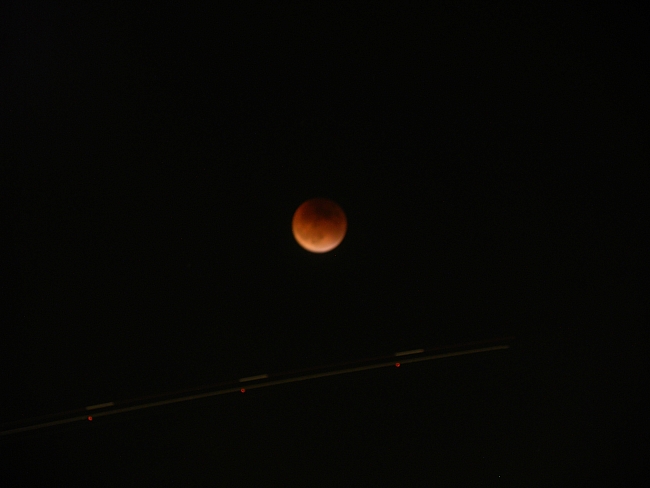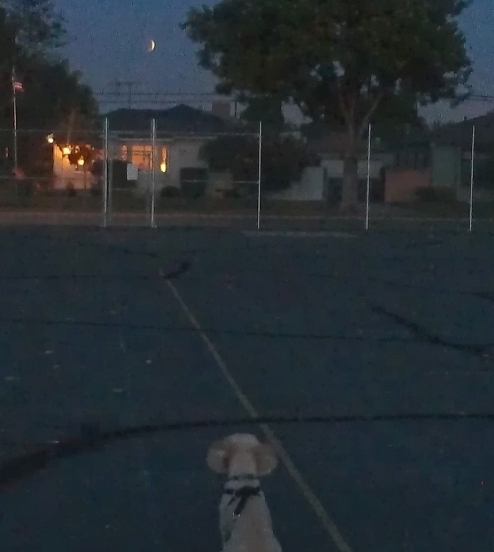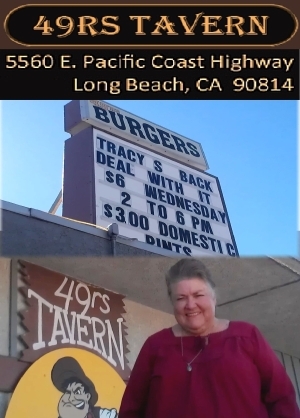(Sept. 27, 2015) -- With a few clouds and haze near the horizon adding an eerie effect, Long Beach saw an awesome total eclipse of a "Supermoon" (appearing larger than usual) as it fell into Earth's shadow. The total eclipse created a brownish/reddish sight instead of the usual white reflected light. Moonrise began (at the horizon) at 6:39 p.m. at 91 degrees east, and (from ELB) was partially obscured by haze. Sunset came a few minutes later at 6:43 p.m. and the sky was clear (in ELB) by the time the moon rose higher in sky and the total eclipse began at 7:11 p.m.
The eclipse reached its peak at 7:47 p.m.; totality ended at 8:23 p.m.; and the final umbral eclipse was over by 9:27 p.m.
Below are a few sights we captured. Our son, Max combined science, photo savvy and creativity in a photo of the moon during its total eclipse (displaying its atmospheric-scattered reddish/brown color) while using a time exposure to capture the path of a jet plane as it passed by. See it (and other photos as we get them) below.
[Scroll down for further.]



















